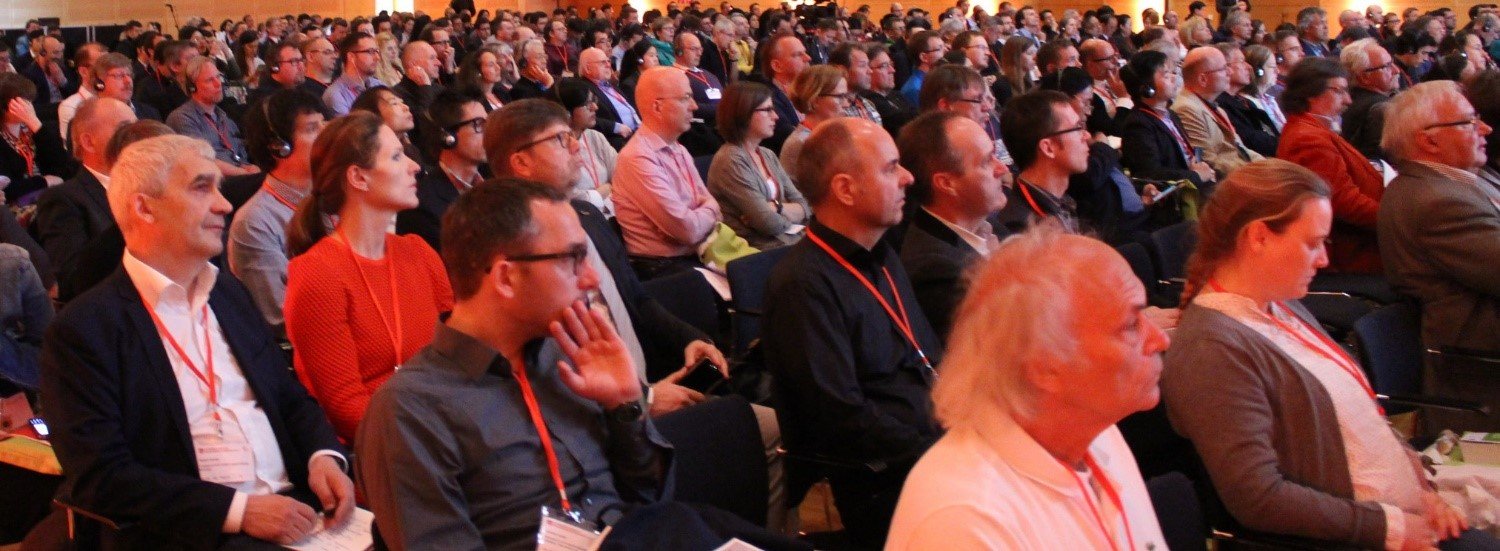 Full plenum at the 21st International Passive House Conference in Vienna © Passivhaus Austria
Full plenum at the 21st International Passive House Conference in Vienna © Passivhaus Austria
Passive House for all! - 21st International Passive House Conference
28 | 29 April 2017, Messe Wien Congress Center
"The technology for energy efficient construction is already there, now it is all about implementing it in practice and building cleverly", explained Günter Liebel, Head of Department of the Austrian Ministry of the Environment, at the opening plenary session of the 21st International Passive House Conference. Over 1000 participants from more than 50 countries travelled to Vienna in order to exchange information relating to energy efficient construction and learn more about international Passive House projects.
Breaking through the system
Changing habits requires us to think, and it isn't easy. But breaking old habits and sharing resources fairly is necessary in order to reduce climate change to a tolerable level, as renowned climate researcher Helga Kromp-Kolb explained. As head of the Center for Global Change and Sustainability at the Vienna University of Natural Resources and Applied Life Sciences Helga Kromp-Kolb demonstrated that habits can not be overcome automatically, consideration is required and the construction sector is no different.
Scott Foster, Head of the Sustainable Energy Division of the United Nations Economic Commission for Europe, also specifically addressed traditional practices in his speech. "We must break through this system which is designed to produce and deliver more and more energy". Consumers must also be made aware of this. In general, they tend to care less about where exactly the energy used by them is coming from.
Rich conference programme
The plenary sessions were followed by more than 100 presentations by speakers from over 50 countries. This demonstrates the exciting projects that are being built to the energy efficient Passive House Standard throughout the world. This included presentations on the sustainable "5-Euro-Wohnbau" project from the Neue Heimat Tirol social housing company, a lecture on the Tochoji Passive House Temple in Tokyo and a mobile Passive House with 40 square metres of living space from a 3D printer. At the same time, experts also dealt with important issues relating to energy efficient building construction. The topics of the 16 working groups included the combination of Passive House with renewable energy, high-rise buildings to the Passive House Standard, like the Cornell Tech in New York and the "Bolueta" in the Spanish city of Bilbao, projects involving retrofitting to the Passive House Standard and many other international projects.
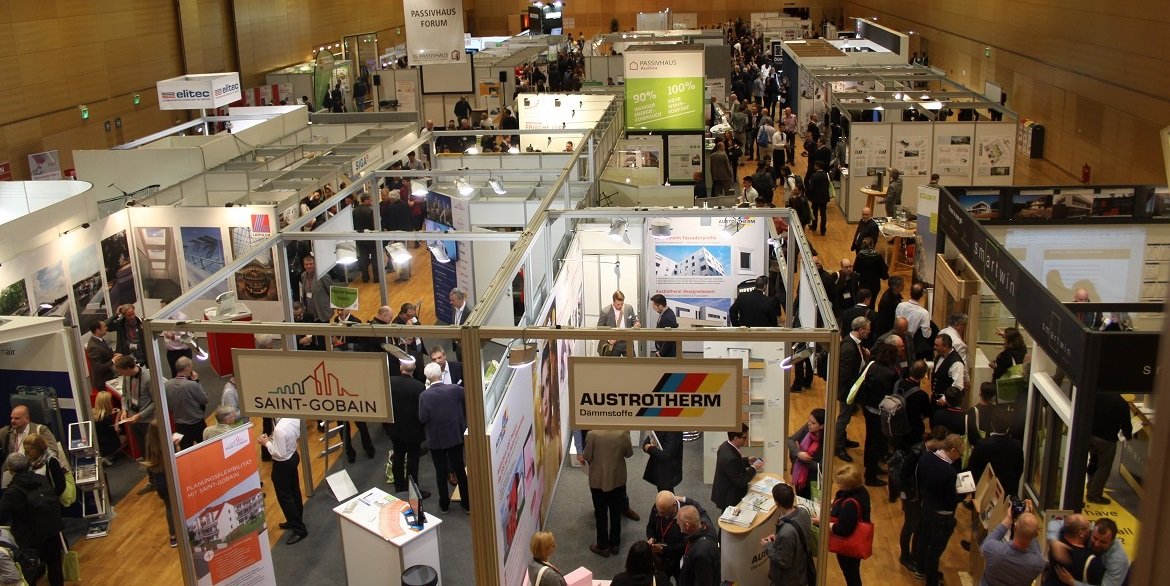 Passive House Exhibition © Passive House Institute
Passive House Exhibition © Passive House Institute
Many new Passive House components
At the accompanying Passive House specialist exhibition in the Messe Wien Congress Center, around 100 companies displayed their products for energy efficient construction, including windows, attic staircases, insulation materials, pet doors and of course ventilation units with heat recovery. A growing number of manufacturers are now having their products certified as Passive House components. Over 870 products are currently listed in the Component Database of the Passive House Institute. Many new products were certified especially in the last year, explained Professor Wolfgang Feist.
For the organisers of the Conference, it is also important that potential building owners receive first-hand information. This year too, the Homeowners Forum during the specialist exhibition offered numerous interested persons the opportunity to obtain information about energy efficient construction and retrofitting.
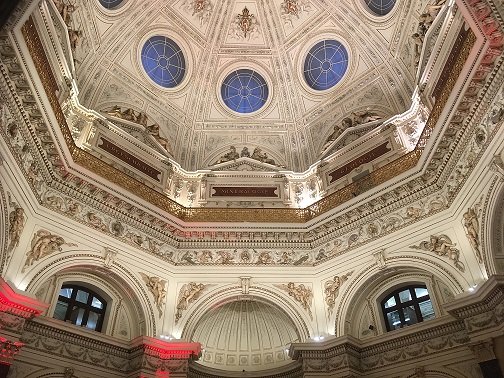 Evening event at Vienna Natural History Museum © Passive House Institute
Evening event at Vienna Natural History Museum © Passive House Institute
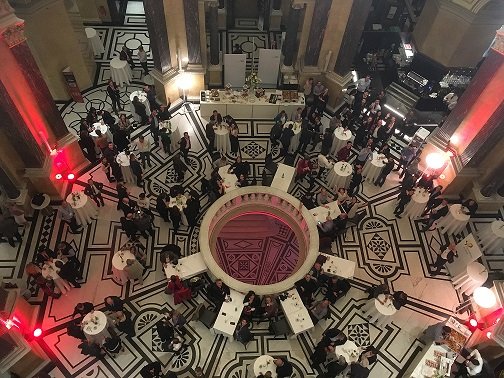 Networking with Viennese flair © Passive House Institute
Networking with Viennese flair © Passive House Institute
Networking with Viennese flair
This evening event was a great way to unwind after a busy day at the conference. This year, it took place in the magnificent Vienna Museum of Natural History, offering excellent networking opportunities as well as the chance to catch up with familiar faces.
The atmosphere in the museum was unique and the halls were open allowing participants to stroll - past bears, elephants, colourful birds, butterflies and even a huge whale. The event featured delicious food and drinks, certificate presentation ceremonies for international Passive House projects and there was also several guided tours taking guests up to the building's roof for a beautiful view over Vienna!
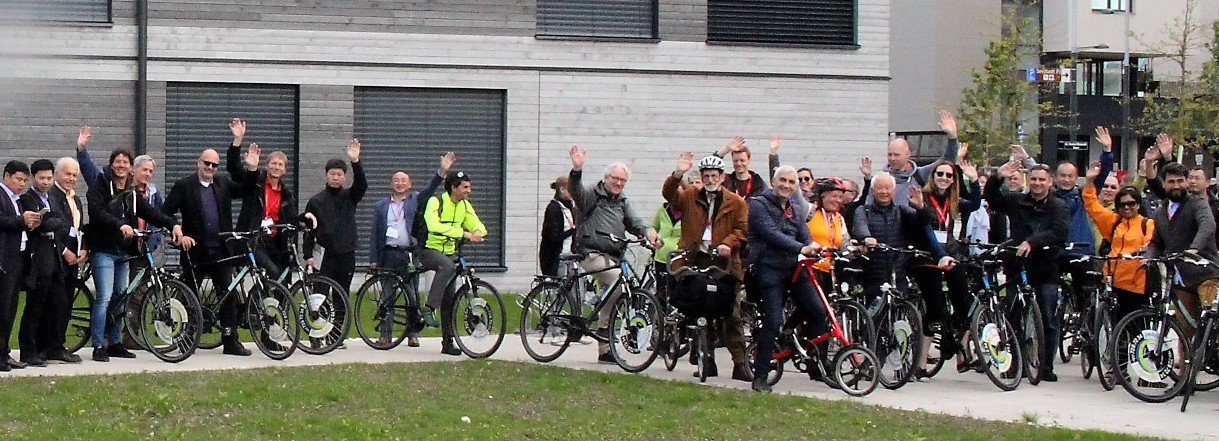 These participants were part of the 30km Passive House bike tour. © Passive House Austria
These participants were part of the 30km Passive House bike tour. © Passive House Austria
Excursions to more than 40 buildings
The city of Vienna chosen by the organisers of the Conference - the Passive House Institute with its two locations in Darmstadt and Innsbruck, and the Passivhaus Austria network - is regarded as a pioneer in energy efficient construction. With Passive House high-rises, hotels, large multi-storey buildings and student dorms, many dedicated projects exist in Vienna and the adjacent province of Lower Austria. They prove that energy efficient construction and refurbishment to the Passive House Standard is also possible for diverse user groups.
After the 21st International Passive House Conference, participants of the eight excursions in total were able to gain an impression of the different Passive House projects. The visits to more than 40 buildings of a high architectural standard in Vienna and Lower Austria also highlighted the conference theme "Passive House for all!" In two excursions, participants travelled in an environmentally friendly manner via the underground and with bikes. Many workshops and the basics course "Passive House – A Contribution to Climate Protection" took place prior to the Conference.
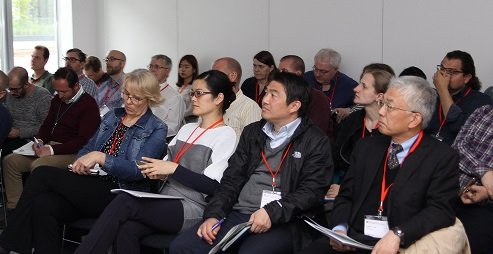 Fully booked - workshop on cooling and dehumidification © Passive House Institute
Fully booked - workshop on cooling and dehumidification © Passive House Institute
Workshops in the run up to the conference
Many beginner and advanced workshops took place prior to the conference. Participants could deepen their knowledge about the planning tools PHPP and designPH and Passive House windows and cooling strategies. The new workshops on energy efficient hot water systems and commissioning and performance optimisation awake a great interest and we are already looking forward to the upcoming workshop programme next year!
Thank you for coming!
We would like to say thank you to all speakers and participants, supporters and exhibitors of the 21st International Passive House Conference!
We hope that you enjoyed this event as much as we did! You can find more pictures here!
See you again in 2018 in Munich!
The first International Passive House Conference was held in 1996 in Darmstadt, Germany, the city where in 1991 building physicist Wolfgang Feist built the world's first Passive House building. Ever since then, the Passive House Institute has been holding the event in a different city. On the occasion of the 25th anniversary of the pilot project in Darmstadt last year, the Conference returned to its place of origin. Next year the 22nd International Passive House Conference and the accompanying exhibition will take place on 9 and 10 March 2018 in Munich.